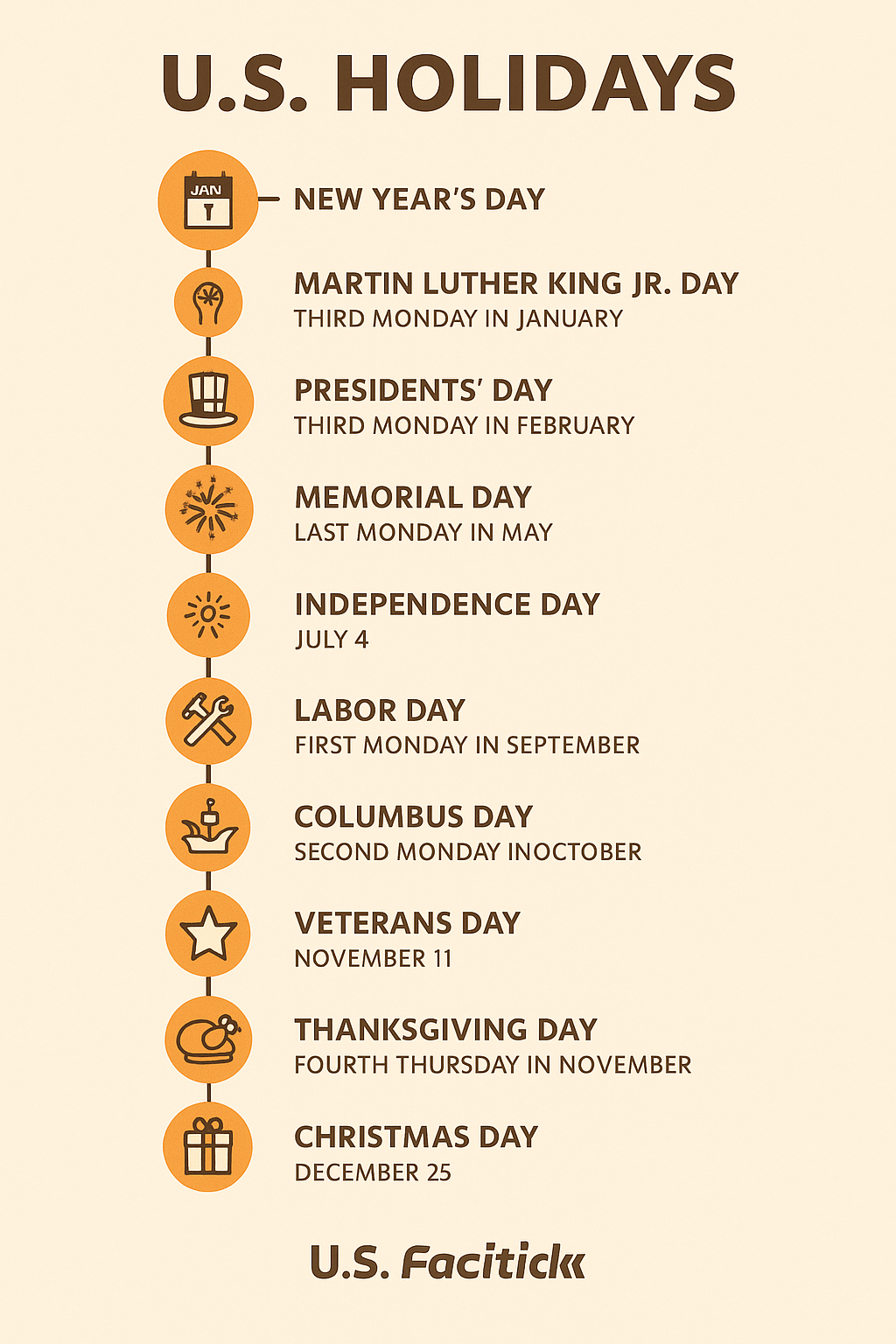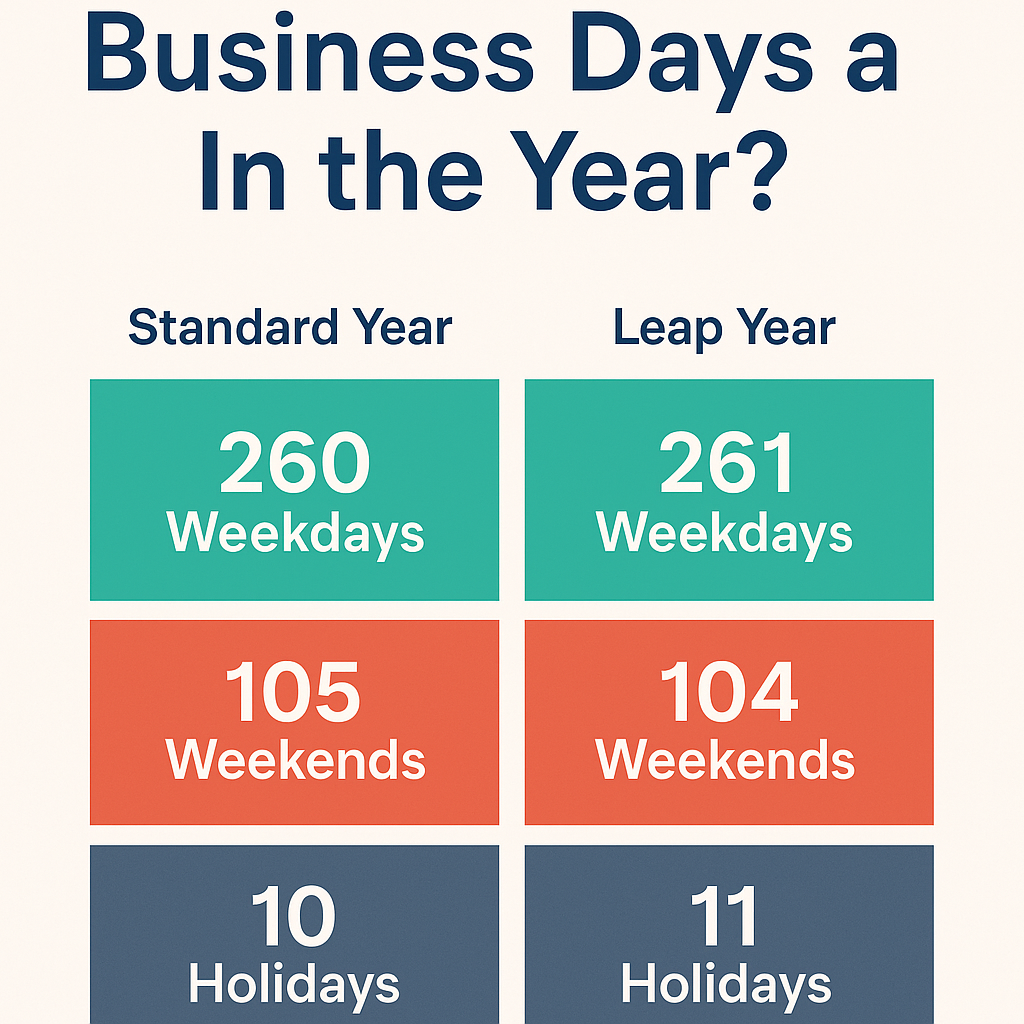How many business days are in the year ?
How many business days a in the year? It’s a question that comes up more often than you might think—whether you’re managing deadlines, tracking employee hours, or planning your own vacation time. Knowing the exact number of business days can help you make better decisions, stay on schedule, and avoid costly miscalculations. In this post, we’ll break down everything you need to know, including how business days are calculated, how holidays impact the total, and what to expect each year
How Many Business Days a In the Year? A Complete Guide for Accurate Planning
When you’re planning your calendar, project deadlines, employee schedules, or even vacation time, one important question often comes up: how many business days a in the year? This might seem like a simple inquiry, but the answer plays a crucial role in financial planning, productivity tracking, and overall business efficiency.
In this in-depth guide, we’ll explain what business days are, how many typically occur each year, how they’re calculated, and why this knowledge is essential in both professional and personal planning. Whether you’re an entrepreneur, HR manager, freelancer, or employee, understanding the number of business days in a year gives you an edge in organizing your time and resources.
What Are Business Days?
A business day is any weekday (Monday through Friday) that is not a public or official holiday. Business days exclude Saturdays and Sundays, which are considered weekends in most countries, including the United States.
For example, if you work a typical Monday-to-Friday job, these are your business days. This concept is commonly used in corporate environments, legal agreements, shipping timelines, payroll calculations, and financial forecasts.
Why Do Business Days Matter?
Understanding how many business days a in the year can influence:
- Payroll—Helps determine the number of days employees are paid for.
- Project Management—Ensures accurate timelines and milestone tracking.
- Client Deliverables—Helps set expectations for delivery and completion.
- Loan Payments—Many financial institutions use business days for due dates.
- Shipping and Delivery—Most shipping companies operate on business-day timelines.
- Vacation Planning Helps calculate remaining leave days or PTO.
In other words, whether you’re running a business or planning your personal time, this metric can significantly improve your time management and planning accuracy.
How Many Business Days Are in a Year?
Let’s start with the basic calculation.
Standard Year (Non-Leap Year)
- A non-leap year has 365 calendar days.
- There are 52 full weeks in a year.
- That means 52 weeks × 5 weekdays = 260 weekdays.
- In the U.S., there are typically 10 federal holidays observed by most businesses.
- Subtracting those holidays:
260 weekdays – 10 holidays = 250 business days.
Leap Year
- A leap year has 366 calendar days.
- The extra day is added to February (Feb 29).
- Leap years still have 52 weeks, but now there’s 1 extra day that may or may not be a weekday.
- Depending on where that extra day falls, you may get 261 weekdays.
- If the extra day falls on a weekend, it doesn’t affect the count of business days.
- Assuming 11 federal holidays:
261 weekdays – 11 holidays = 250 or 251 business days.
Table: Business Days by Year (United States)
| Year | Total Days | Weekends | Federal Holidays | Business Days |
|---|---|---|---|---|
| 2022 | 365 | 105 | 11 | 249 |
| 2023 | 365 | 105 | 10 | 250 |
| 2024 | 366 | 104 | 11 | 251 |
| 2025 | 365 | 104 | 10 | 251 |
| 2026 | 365 | 104 | 10 | 251 |
Note: These values can change depending on where the holidays fall—if a holiday falls on a weekend, businesses may or may not observe it on a weekday.
What Are Federal Holidays in the U.S.?
Here are the 10 major federal holidays that typically reduce the number of business days in a year:
- New Year’s Day – January 1
- Martin Luther King Jr. Day – Third Monday in January
- Presidents’ Day – Third Monday in February
- Memorial Day – Last Monday in May
- Independence Day – July 4
- Labor Day – First Monday in September
- Columbus Day – Second Monday in October
- Veterans Day – November 11
- Thanksgiving Day – Fourth Thursday in November
- Christmas Day – December 25
If any of these fall on a weekend, many businesses observe the holiday on the nearest weekday.

Global Variations in Business Days
The number of business days isn’t universal. Different countries observe different holidays. For example:
- Canada observes provincial holidays in addition to national ones.
- The UK counts “bank holidays” as non-business days.
- India has multiple public holidays based on states and religions.
- Saudi Arabia observes Friday and Saturday as weekends instead of Saturday and Sunday.
So, the number of business days in a year can differ by geography, culture, and sector.
How to Calculate Business Days Between Two Dates
If you’re trying to figure out how many business days fall between two dates, you can do it in several ways:
1. Use Excel
The formula =NETWORKDAYS(start_date, end_date, holidays) allows you to calculate business days quickly.
2. Online Calculators
Sites like TimeandDate.com or CalculatorSoup.com offer free tools for calculating business days with holiday exclusions.
3. Manual Count
Use a physical calendar and cross out all Saturdays, Sundays, and holidays.
Business Days vs. Workdays: Know the Difference
A lot of people use “business day” and “workday” interchangeably, but there’s a small difference.
- Business Days – Monday to Friday, excluding public holidays.
- Workdays – Any day an employee is scheduled to work. For example, in healthcare or retail, employees might work on weekends.
Always double-check definitions when reading contracts or corporate policies.
Monthly Breakdown of Business Days
Here’s an approximate monthly breakdown of business days in a typical year:
| Month | Avg. Business Days |
|---|---|
| January | 21 |
| February | 20 (or 19 in leap years with a holiday) |
| March | 23 |
| April | 21 |
| May | 22 |
| June | 21 |
| July | 21 |
| August | 23 |
| September | 21 |
| October | 22 |
| November | 21 |
| December | 21 |
Use Cases: When You Need to Know Business Days
1. Freelancers & Contractors
Knowing the number of business days helps with hourly billing, project deadlines, and client reporting.
2. Project Managers
Helps in setting timelines that reflect working hours, avoiding over-promising due to holidays.
3. Employees
Important for tracking PTO, planning vacations, and understanding available workdays.
4. Business Owners
Crucial for payroll processing, scheduling product launches, and financial forecasting.
Tips to Optimize Planning with Business Days
- Use a business calendar: Many tools like Google Calendar allow holiday integrations.
- Mark out public holidays at the start of the year.
- Automate calculations using Excel or project management software.
- Plan ahead for long weekends and slow periods.
Final Thoughts: Why Knowing Business Days in a Year Matters
Understanding how many business days a in the year may seem like a small detail, but it has a major impact on how we plan, work, and succeed. From businesses managing payroll and operations to individuals organizing vacations or meeting deadlines, business days form the core structure of how time is measured in the professional world.
Most years will have about 250 to 251 business days, but that number can change slightly depending on holidays and whether it’s a leap year. By keeping track of business days, you can improve your scheduling accuracy, increase productivity, and reduce stress when it comes to time-sensitive goals.
In short: knowing the number of business days in a year helps you plan smarter, work more efficiently, and stay ahead. Whether you’re a business owner, freelancer, employee, or planner of any kind—this is one piece of knowledge worth bookmarking.
FAQs
Q: How many business days are there in 2025?
A: In 2025, there are approximately 251 business days in the U.S., depending on the holiday calendar.
Q: Do weekends count as business days?
A: No. Business days only include Monday to Friday, excluding weekends and public holidays.
Q: Are business days the same in all countries?
A: No. Different countries observe different holidays and weekends, so the number varies globally.
Q: What happens if a holiday falls on a weekend?
A: Many businesses observe the holiday on the closest weekday, typically the preceding Friday or the following Monday.






